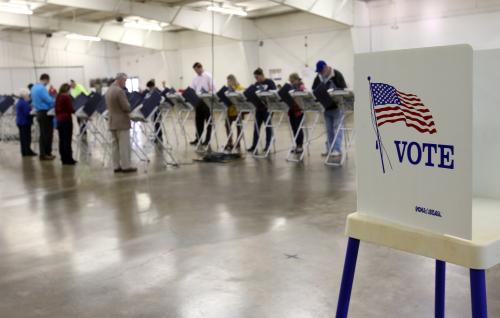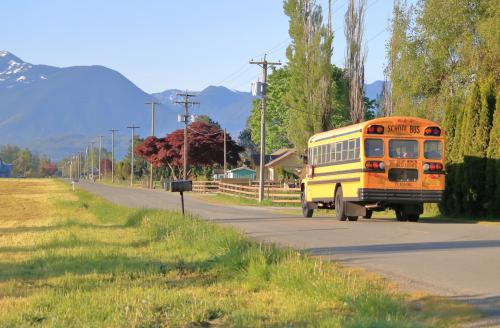Annual Census Bureau data, tracking national and state population totals, brought both good and bad news this year. First the bad news: The nation has just registered a new low point in population growth since the Depression era. However, on a more positive note, population growth is returning to Sun Belt states as their economies revive post-recession.
Declining national population growth
The nation’s annual growth rate sunk below 0.7 percent in 2015-16, making it the lowest rate of growth since the 1936-37 measurement (see Figure 1). For the bulk of the period spanning World War II through the early 1980s national growth exceeded 0.95 percent. And high growth rates during prime baby boom years exceeded 1.5 percent, topping out at 2.1 percent between 1949-50.

A modest slowdown occurred during the 1980s, though rates still hovered around 0.9 percent, then rose to over 1 percent in the 1990s consistent with the birth of the millennial generation and rises in immigration. The early 2000s showed a slight diminution in those rates but growth remained above 0.9 percent.
After 2008, rates dipped below 0.8 percent for six years and fell to the recent sub 0.7 percent low in 2015-16. Some of the initial decline over these years is attributable to reduced immigration. But as immigration levels have increased in the past three years, now hovering around one million annually, low “natural increase” – the excess of births over deaths – has played a bigger role as the birth rate has declined and the death rate has risen (see Figure 2).

It is likely that some of the reduced fertility in recent years is attributable to recession-related delays in family formation among young adult millennials; this trend could reverse in the near future as the economy continues to grow. But higher death rates are likely to continue due to the long-term aging of the population, a phenomenon contributing to projected declines in U.S. growth rates, which could drop as low as 0.5 percent in 2040.
Still immigration, both past and present, has contributed to the nation’s population growth at a time when several other industrialized counties, such as Japan, Germany, and Italy are facing the specter of long-term population decline. By comparison, the United States can look forward to continued population growth, albeit at lower levels, for decades to come.
Continued shifts to the Sun Belt
Despite the lower national growth rate, the new statistics herald good news for several Sun Belts states where recent population shifts are reversing slow growth during the Great Recession and immediate post-recession years. Seven of the eight fastest growing states are located in the West: Utah, Nevada, Idaho, Washington, Oregon, Colorado, and Arizona. Each of these registered growth rates exceeding 1.6 percent in 2015- 2016, and Montana, which ranked 14th, grew by 1 percent. All of these western states (Colorado excepted) grew more rapidly in 2015-16 than in 2014-15 (download Table 1).
Southern states and the District of Columbia fill out the rest of the 14 fastest growing states led by Florida (ranked fourth), along with Texas, South Carolina, North Carolina and Georgia (ranked 10th through 13th). Most of these states grew more rapidly in 2015-16 than they did during much of the period surrounding the 2007-09 recession. The uptick in population growth seen in this year’s Census data could be a sign that these states are heading back toward the growth levels they experienced prior to the recession.
At the other end of the spectrum are eight states that registered population declines in 2015-16. Two are especially notable: Illinois, which experienced the largest absolute population losses of any state for three years running; and New York, which registered its first population loss since 2005-06. Others displaying population declines are West Virginia, Vermont, Connecticut, Wyoming, Pennsylvania, and Mississippi.
Of particular note is North Dakota, a state were growth rates exceeded 2 percent for four consecutive years and that registered the highest growth rate in the country in 2014-15. But its recent economic slowdown due to the reversal of the oil boom has led to a severe drop-off in its ability to attract workers. In 2015-16, North Dakota’s growth fell to 0.15 percent, ranking 37th among states.
Migration across regions
Population growth is the sum of several components: natural increase, immigration, and domestic migration. The latter is closely tethered to economic circumstances and shapes yearly population gains or losses across states and regions.
The new net domestic migration statistics show a continued revival of movement from the broad Northeast and Midwest “Snow Belt” region to the South and West “Sun Belt” region. The mortgage meltdown, financial crisis, and the onset of the Great Recession converged to stall Snow Belt out-migration to the Sun Belt between 2007 and 2013. Now the Snow Belt to Sun Belt flows, which began to emerge again in 2013-14 are continuing, as shown in Figure 3.

Among states, the largest 2015-16 net migration gainers included Florida, Texas, Washington, North Carolina, Colorado, Oregon, South Carolina, Georgia, and Nevada. Most of these states displayed an uptick in net migration since 2014-15 and a significant increase in net migration since 2009-10 (download Table 2). The exception is Texas, which is one Sun Belt state that fared relatively well during the recession. But now, Texas’s migrant appeal, while still high, has modestly declined thanks to other Sun Belt states become increasingly attractive.
The greatest out-migration states, with the exception of California, are located in the Snow Belt including New York, Illinois, New Jersey, Pennsylvania, Connecticut Michigan, and Ohio. While many of these states held on to “would be migrants” during the recession when Sun Belt jobs dried up, most are once again seeing increased out-migration. In 2009-10, right after the recession, New York lost 91,000 migrants. This has risen to a loss of 191,000 in 2015-16.
California’s migration trends are a notable Sun Belt exception. Unlike most other states in this region, California followed the “New York model,” losing fewer migrants during the recession and now experiencing renewed out-flows to more affordable states nearby like Nevada, Arizona, Oregon, and Washington, as economies pick up there.
Overall, the United States seems to be in the midst of a population growth paradox: As the nation’s population growth continues to stagnate due to fertility declines in the context of an aging population, internal population shifts help places like the Sun Belt continue to grow. Because the latter is more economically driven than former, it is encouraging to see that a key demographic indicator of a strong economy – migration in response to newly emerging employment opportunities – is reviving in tandem with the economy.
The Brookings Institution is committed to quality, independence, and impact.
We are supported by a diverse array of funders. In line with our values and policies, each Brookings publication represents the sole views of its author(s).






Commentary
U.S. growth rate hits new low as migration to the Sun Belt continues
December 23, 2016